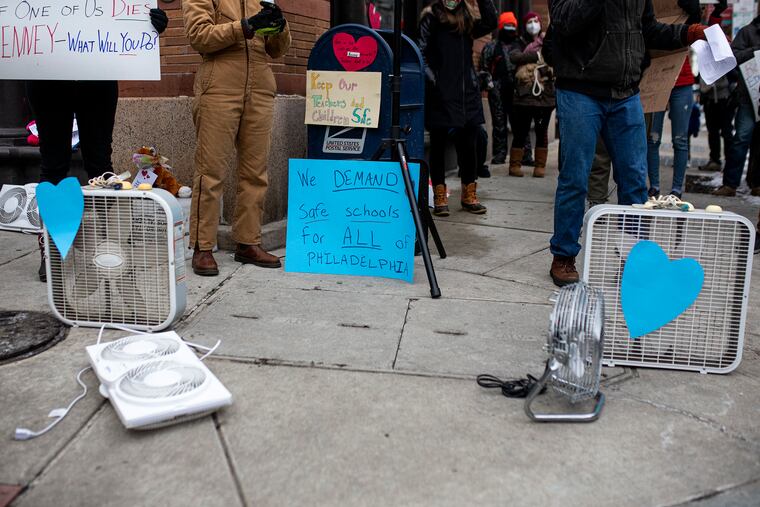Philly should use the schools reopening debate to fix longer-term problems | Opinion
Communities of color already faced plenty of education barriers before the pandemic.

As author Adrienne Maree Brown wrote, “Things are not getting worse, they are getting uncovered. We must hold each other tight and continue to pull back the veil.” For communities of color, COVID-19 has compounded the inequities prevalent in K-12 schools as virtual instruction has replaced face-to-face instruction for the foreseeable future. School closures and the transition to remote learning have resulted in millions of students losing access to education and crucial health resources.
While efforts have been focused on reopening Philadelphia schools, the district must be as focused on addressing the issues that were present before the pandemic and its long-term consequences.
COVID-19 has entrenched educational inequities for communities of color. In November, citing a surge in COVID-19 cases, Philadelphia schools reversed their decision to reopen school buildings, continuing virtual instruction until a later date. Ensuring the physical safety of students is paramount, making the decision to remain virtual during an uncontrolled pandemic prudent and necessary. But because of the preexisting lack of access to the internet and other services important for learning environments, students in communities of color have been disproportionately affected by school closures. Furthermore, students in need of services such as special education, including one-to-one care, are at an even greater disadvantage due to distance education. New evidence shows that the loss of learning caused by the pandemic may extend beyond the pandemic.
» READ MORE: It looks as if the reopening timeline for Philly schools could depend on the school
What we see repeatedly across national crises and disasters is that the most disenfranchised among the U.S. population are most harmed physically, emotionally, economically, and educationally. What the COVID-19 pandemic has unveiled is the critical need for improvements in fundamental infrastructure for K-12 schools in Philadelphia and throughout the nation’s communities of color.
While the district prepares to reopen schools, it should be moving forward on those longer-term improvements, too. For example, one major reason cited by officials for the indefinite closures of schools in the district was aging buildings that have inadequate ventilation. The solutions necessary to deal with the effects of the COVID-19 pandemic must be long term and involve coordinated efforts from school administrators, teachers, and parents to bridge the opportunity gap with a culture of equity that supports the needs of all students, particularly those who have been marginalized in the current education system.
Another key issue for communities of color is the lack of access to computers alongside quality and reliable internet access, and environments conducive to optimal learning, such as designated remote learning spaces with limited distractions. A lack of access to computers and broadband wireless most strongly impacts communities of color, rural communities, and those in lower socioeconomic groups. And students with experience using smartphones — which can help get some people online who otherwise don’t have access — are experiencing issues with the technological platforms used in virtual instruction that is typically designed for computers. These barriers expose the digital divide as a crisis for student learning.
» READ MORE: CDC gives new road map for schools without requiring schools to reopen
Additionally, the heightened stress that communities of color already experience due to systemic racism is unimaginably magnified during the COVID-19 pandemic, which has added new stressors. K-12 curriculums should therefore incorporate trauma-informed school strategies, such as training school staff to help traumatized students effectively deal with their emotions to ensure academic success and to address the socioemotional effects of these crises for students.
The opportunity gap for K-12 students in communities of color will continue to grow if the resources, both new and existing, are not sufficient to meet the needs of this population of students.
The traditional school experience, where access to education and health services were already at a minimum, is near impossible to obtain during the pandemic. Students who were at risk for failure have now lost a critical outlet that was provided by the school environment and resources that assisted them in achieving positive educational outcomes. The impact of racial, gender, and class inequalities in the education system was already well-documented before the pandemic. However, the pandemic has reinforced how desperate measures need to be taken to deal with the critical opportunity gaps in communities of color. The conversation about education inequity can’t fade once the pandemic does. District leaders should commit now to long-term plans to address these issues.
Tajma Cameron is a doctoral student in the Drexel University School of Education.